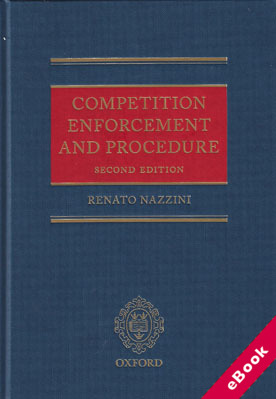
The device(s) you use to access the eBook content must be authorized with an Adobe ID before you download the product otherwise it will fail to register correctly.
For further information see https://www.wildy.com/ebook-formats
Once the order is confirmed an automated e-mail will be sent to you to allow you to download the eBook.
All eBooks are supplied firm sale and cannot be returned. If you believe there is a fault with your eBook then contact us on ebooks@wildy.com and we will help in resolving the issue. This does not affect your statutory rights.
The problem of concurrent proceedings is a highly topical one, as public administrative enforcement in many jurisdictions escalates, with record-breaking fines.
This book was the first to examine and explain the procedural complexities of concurrent proceedings in competition law, focusing on parallel or sequential administrative, criminal, and civil proceedings.
The book begins with an analysis of the legal framework, including concurrent enforcement of competition law, administrative and judicial proceedings, as well as an overview of the relevant legal principles. The second part discusses the interplay between administrative, civil, and criminal proceedings, including stays, the effect of administrative decisions, disclosure and admissibility of evidence, and the criminalisation of cartels.
The third part deals with international commercial arbitration, covering arbitration of competition law disputes in the European Community and the US, and arbitration and concurrent proceedings. The fourth part evaluates the tactical implications of concurrent proceedings, and leniency and concurrency.
Fully revised and updated with developments in jurisprudence across the US, UK, and EU, this is the most comprehensive and authoritative practitioner guide to this fast-moving and complex area of law.